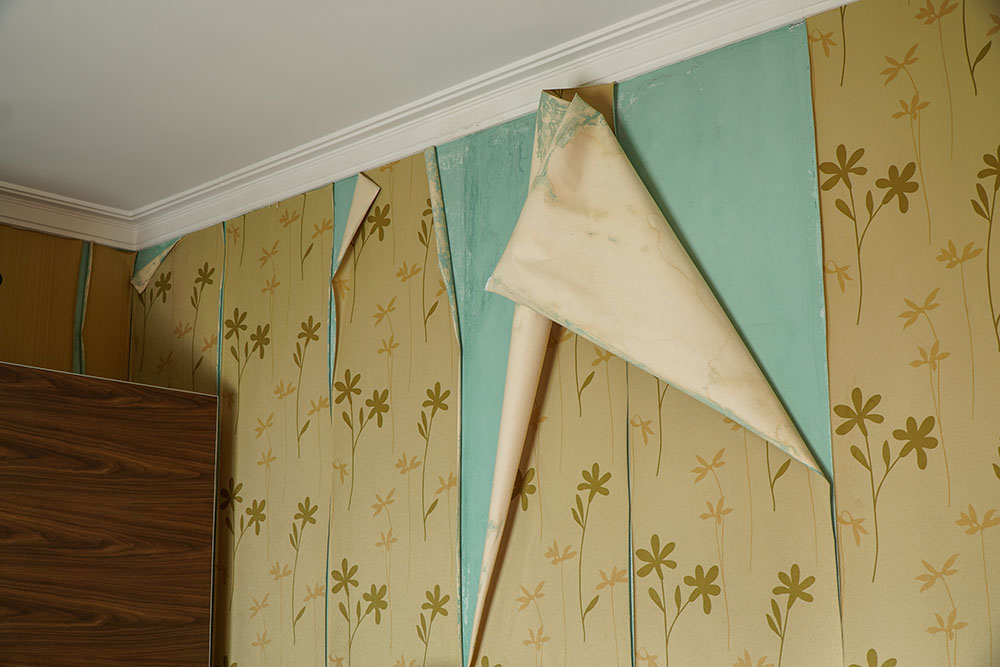What Type Of Damp Do You Have?

CONTENTS
- What is damp and why is it an issue?
- What are the signs of damp?
- What types of damp do you have?
- Why you should never ignore damp
- Do you need a damp survey?
- How to prevent damp
- Frequently asked questions
- Get in touch
Understanding the type of damp in your home is crucial for effective management and prevention. This is a pressing issue in many UK homes and ignoring these moisture issues can lead to architectural deterioration and health concerns.
At ICE Cleaning, we offer mould remediation services and moisture surveys for your property. Whether you are struggling with damp or require mould removal, our team of experts can assist you, providing a lifetime guarantee* with our services.
Read on to learn if you are dealing with rising damp, penetrating damp, or condensation.
*subject to advisories
What is damp and why is it an issue?
Damp is the build up of excess moisture within a building's structure due to different origins, posing significant risks. The presence of moisture often results in numerous complications, affecting the property and its inhabitants' health.
The UK's climate often experiences high humidity levels and frequent rainfall, creating an ideal environment for damp to develop. If left unchecked, damp can cause significant damage, including structural deterioration and health issues such as respiratory problems due to mould growth.
Understanding the origins of damp and spotting its initial signs are integral to controlling and preventing it. Ensuring your home or workplace remains damage-free and healthy involves proactive protection against long-term damage.
What are the signs of damp?
Recognising the early signs of damp is crucial for taking prompt action. The first indication of trapped moisture is often a musty smell that lingers over time. This odour lingers in areas lacking airflow or subjected to water seepage.
Following this, you might notice discolouration on walls or ceilings, which usually appear as dark patches or staining.
Another common indicator is peeling wallpaper or paint bubbling away from wall surfaces due to the underlying moisture affecting adhesion. In more severe cases, salt deposits may form on walls as water evaporates, leaving minerals behind.
Finally, visible mould growth signifies high humidity levels and poor ventilation. This is because mould thrives in these conditions and can pose serious health risks if not addressed promptly.
What types of damp do you have?
UK properties often struggle with damp due to ageing properties or poor construction practices. Damp comes in various types, each triggered by different factors and requiring unique fixes. Understanding the damp type affecting your property is crucial for effective treatment.
Rising damp
Rising damp occurs when groundwater moves through walls or floors made of porous materials like brick. It is identifiable by a 'tide line' of staining or discolouration on lower wall sections. Effective treatment options include installing a new damp-proof course or using electro-osmotic systems.
Penetrating damp
This type results from water infiltrating external walls or roofs, often exacerbated by structural problems such as faulty guttering or roofing. Symptoms include localised wet patches on walls, which worsen after rain. Addressing the external defects is key to resolving penetrating damp issues.
Condensation
The most common form, condensation, comes from excess moisture indoors without adequate ventilation, leading to water collecting on cold surfaces like windows and walls. Improving home ventilation and heating consistency can significantly reduce condensation-related problems.
Why you should never ignore damp
Damp can seem like a minor issue at first, but it harbours potential risks that go beyond mere aesthetic concerns. Structural damage and health problems are the most significant consequences of unchecked damp.
Structural integrity is compromised when moisture penetrates timber or masonry, leading to wood rot or decay. By eroding the home's infrastructure, it can gradually destabilise your home's foundation, leading to significant safety concerns.
From a health perspective, damp environments foster mould growth, triggering respiratory problems and allergies. The spores produced by moulds pose a risk, especially to those with pre-existing conditions such as asthma or weakened immune systems.
Do you need a damp survey?
Determining the need for a damp survey depends on accurately identifying the type and extent of damp in your property. A professional assessment can offer clarity, ensuring that any intervention is appropriate and effective.
A damp survey conducted by an expert delves deep into the root causes, using their extensive experience to distinguish between condensation, penetrating damp, or rising damp. This distinction is crucial because each requires a different approach for resolution.
If you notice signs such as peeling wallpaper, tide marks on walls, or musty smells without obvious sources, it may indicate the presence of mould.
In such cases, it is crucial to seek professional help. Our team of mould experts at ICE Cleaning can conduct moisture surveys on your property to ensure the mould is dealt with effectively.
How to prevent damp
Damp can be a persistent issue, but you can reduce how much it affects your living space. By doing the following, you can control damp and prevent mould:
- Check and repair any leaks in the roof or plumbing
- Keep gutters clear of debris
- Install extraction fans in the kitchen and bathroom
- Open windows where possible to enhance ventilation
- Place standing fans in affected areas to circulate the air
- Place dehumidifiers in affected rooms to lower humidity
- Wipe down condensation when you see it
- Ensure the heating in your home is consistent
- Dry clothes outside or on a heated clothes horse
- Clean your home regularly with anti-mould cleaners
- Keep bathroom and kitchen doors closed when in use
Frequently asked questions
How to tell the difference between rising damp and penetrating damp?
Rising damp climbs walls from the ground. Penetrating damp seeps through walls at any level, often due to leaks.
How do you find out where damp is coming from?
Check for leaky pipes, damaged roof tiles or overflowing gutters. Moisture meters can also pinpoint the source indoors.
What is the most common form of damp?
Condensation is the most common. It is everywhere because it forms when warm air hits cold surfaces, especially in poorly ventilated homes.
Do I have rising damp or condensation?
If your wall's bottom part is wet and there is a tide mark, it is likely rising damp. If there is no tide mark, it is likely condensation.
Get in touch
For mould cleaning services or damp surveys, you can rely on our team at ICE Cleaning. Our Dewpoint-accredited technicians can assess your property to discover the source of damp and mould, effectively removing it and helping you prevent its return.
To learn more about our mould removal services, get in touch with our team today at 0208 066 0360 or enquiries@icecleaning.co.uk. We have teams stationed nationwide, ensuring you receive the care you need 24/7, all year round.

Speak with me today,
I’m here to help
By asking you a few questions either via phone or email I can immediately provide a realistic estimation of the cost.

Why choose us?
- Cater to a wide variety of cleaning situations
- Nationwide coverage, available 24/7
- Cater to commercial and domestic clients
- Free survey provided prior to quotation
- Emergency response team
- Offer a bespoke service designed to suit all your needs
- All technicians hold professional health and safety qualifications, including BICSc, IOSH, Dewpoint Professional & Safe Contractor
We’re fully accredited
We place best practise, professional expertise and health and safety at the core of our business. We’re fully compliant with all legal obligations. You can view a list of our accreditations below, or visit our Health & Safety page for more information.











-RGB-small.1707319151.jpg)




















